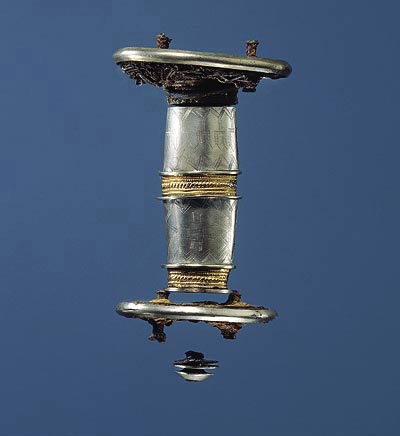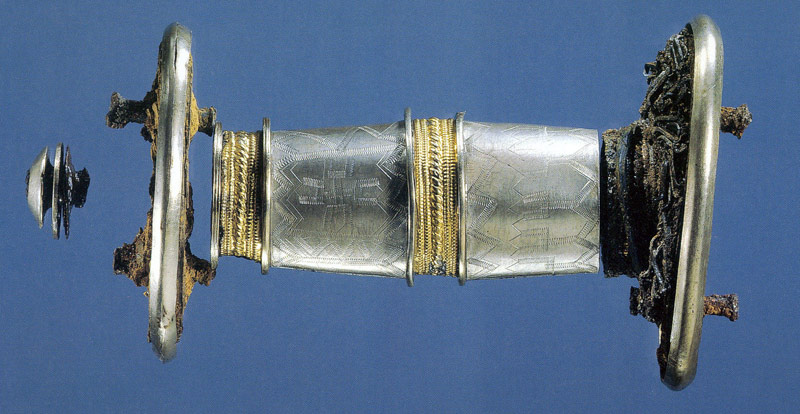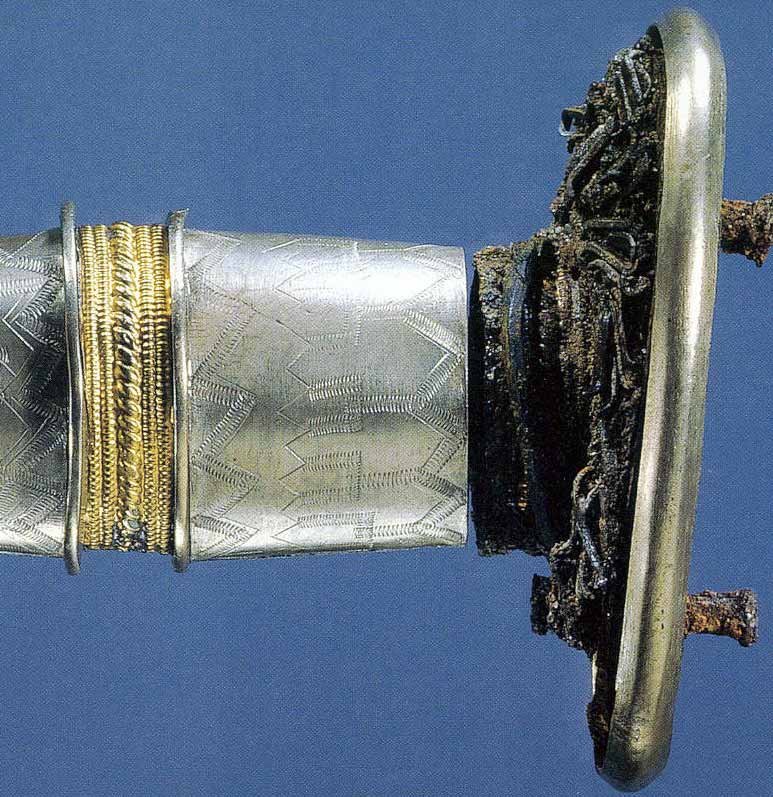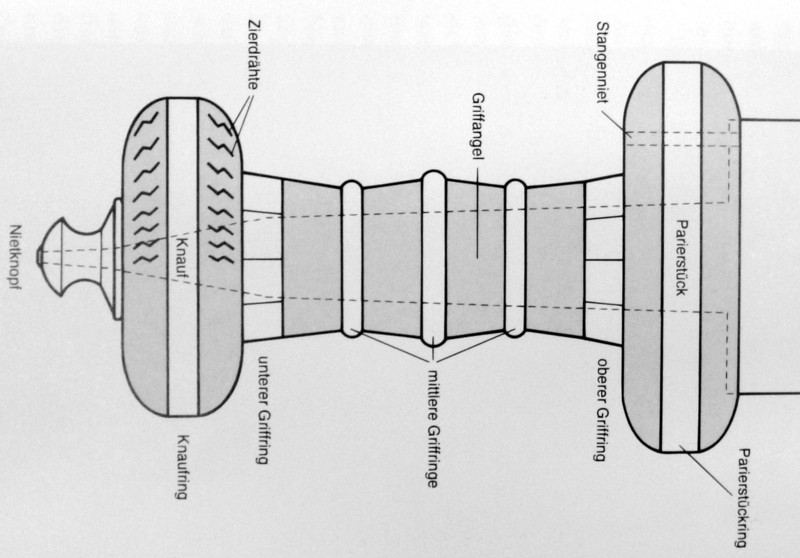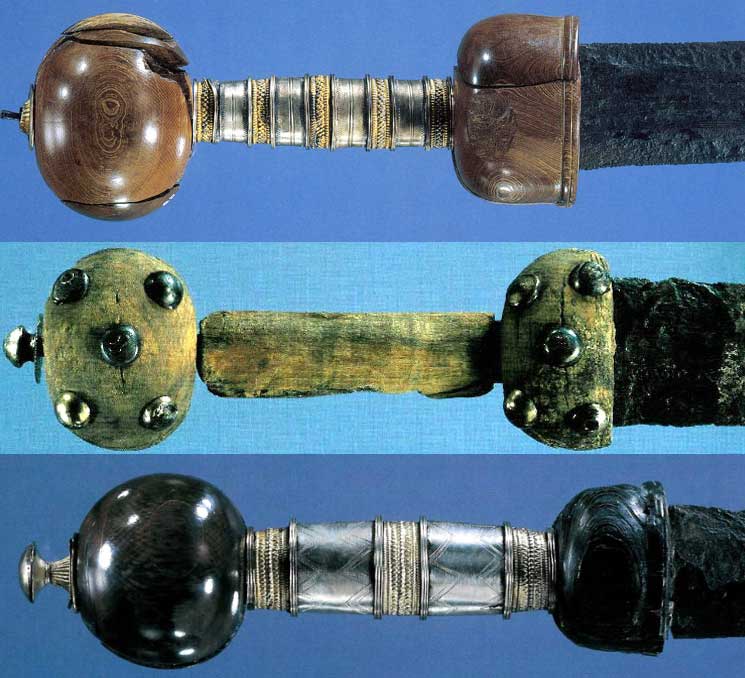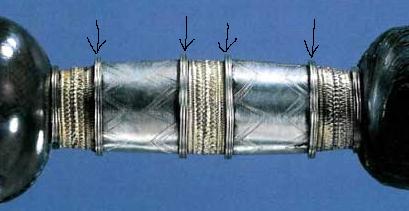Posts: 1,757 Location: Storvreta, Sweden
Fri 24 Oct, 2008 2:04 am
Those wriggly things crawling over the surface is probably silver embellishments (now blackened).
I do not have the text at hand right now, but I remember from browsing through the volumes on sword hilts and sword belts, that several of the hilts of this type had decoration of silver wire fastened into the organic upper and lower guard of the hilt. A common theme was rows of repeated S-shapes, fastened down in to the guard as staples.
The upper and lower guards were flat and very slightly oval, with a reinforcing ring of silver or bronze around the "equator". Visualize flat hamburgers.
Rivets going through the thickness of the organic material hints at a construction of several layers. Perhaps horn or bone.
I faintly remember horse hair being mentioned in this context, but never got a clear idea of how this was achieved. Maybe as some sort of early micarta with horse hair and glue mixed together.
These swords are very elegant and have light and nimble blades sometimes with rather exotic asymmetrical cross section (like two fullers on one side, three on the other).
Pattern welding seems to have been predominant method of blade construction.
A theory I have is that it was pretty common to see leather covered organic hilt components. Cut groves and domed tacks are perfect for holding down thin leather. Experiments with
shields have shown that they were probably covered with gut. Nothing remains of this thin layer of gut today, but sometimes there is paint on the wood. The color shows through the gut. Such a layer makes a great difference in resiliency of the shield.
For a sword hilt it provides some reinforcement, but also water proofing and the option to color the wood under a thin layer of gut.
It may be with noting that the silver grip looks like it mimics the look of a leather covered grip with cord risers underneath.
Most hilts of this type had both guards and grip made out of organic material.
